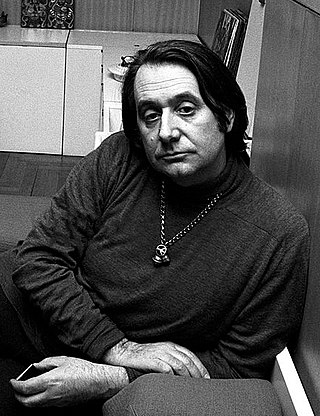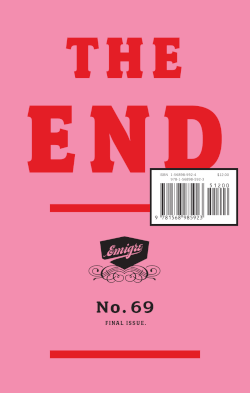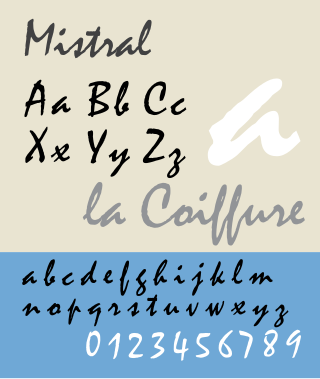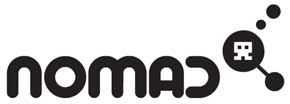
Jan Tschichold was a German calligrapher, typographer and book designer. He played a significant role in the development of graphic design in the 20th century – first, by developing and promoting principles of typographic modernism, and subsequently idealizing conservative typographic structures. His direction of the visual identity of Penguin Books in the decade following World War II served as a model for the burgeoning design practice of planning corporate identity programs. He also designed the typeface Sabon.

Emigre, Inc., doing business as Emigre Fonts, is a digital type foundry based in Berkeley, California, that was founded in 1985 by husband-and-wife team Rudy VanderLans and Zuzana Licko. The type foundry grew out of Emigre magazine, a publication founded by VanderLans and two Dutch friends who met in San Francisco, CA in 1984. Note that unlike the word émigré, Emigre is officially spelled without accents.

Ettore Sottsass was a 20th century Italian architect, noted for also designing furniture, jewellery, glass, lighting, home and office wares, as well as numerous buildings and interiors — often defined by bold colours.

Paul Friedrich August Renner was a German typeface designer, author, and founder of the Master School for Germany's Printers in Munich. In 1927, he designed the Futura typeface, which became one of the most successful and most-used types of the 20th century.

Antiqua is a style of typeface used to mimic styles of handwriting or calligraphy common during the 15th and 16th centuries. Letters are designed to flow and strokes connect together in a continuous fashion; in this way it is often contrasted with Fraktur-style typefaces where the individual strokes are broken apart. The two typefaces were used alongside each other in the germanophone world, with the Antiqua–Fraktur dispute often dividing along ideological or political lines. After the mid-20th century, Fraktur fell out of favor and Antiqua-based typefaces became the official standard in Germany.

Emigre was a (mostly) quarterly magazine published from 1984 until 2005 in Berkeley, California, dedicated to visual communication, graphic design, typography, and design criticism. Produced by Rudy VanderLans and Zuzana Licko, Emigre was known for creating some of the very first digital layouts and typeface designs. Exposure to Licko's typefaces through the magazine lead to the creation of Emigre Fonts in 1985.
Zuzana Licko is a Slovak-born American type designer and visual artist known for co-founding Emigre Fonts, a digital type foundry in Berkeley, CA. She has designed and produced numerous digital typefaces including the popular Mrs Eaves, Modula, Filosofia, and Matrix. As a corresponding interest she also creates ceramic sculptures, textile prints and jacquard weavings.

Lettering is an umbrella term that covers the art of drawing letters, instead of simply writing them. Lettering is considered an art form, where each letter in a phrase or quote acts as an illustration. Each letter is created with attention to detail and has a unique role within a composition. Lettering is created as an image, with letters that are meant to be used in a unique configuration. Lettering words do not always translate into alphabets that can later be used in a typeface, since they are created with a specific word in mind.
Rudy VanderLans is a Dutch graphic designer, photographer, and the co-founder of Emigre Fonts with his wife Zuzana Licko. Emigre Fonts is an independent type foundry in Berkeley, CA. He was also the art director and editor of Emigre magazine, the legendary journal devoted to visual communications from 1984 to 2005. Since arriving in California in 1981, he has been photographing his adoptive Golden State as an ongoing side project. He has authored a total of 11 photo books on the topic, and staged two solo exhibits at Gallery 16 in San Francisco.

Rudolf Koch was a German type designer, professor, and a master of lettering, calligraphy, typography and illustration. Commonly known for his typefaces created for the Klingspor Type Foundry, his most widely used typefaces include Neuland and Kabel.

Roger Excoffon was a French typeface designer and graphic designer.

Peter Biľak is a Slovak graphic and typeface designer, based in The Hague, The Netherlands. He works in the field of editorial, graphic, and type design; teaches typeface design at the postgraduate course Type&Media at the KABK, Royal Academy of Art. He started Typotheque in 1999, Dot Dot Dot in 2000, Indian Type Foundry in 2009, Works That Work magazine in 2012, and Fontstand in 2015. He is a member of AGI, and lectures on his work internationally. He is a writer for numerous design magazines and frequently contributes writing and design to books and publications that include Print, Emigre, Eye (magazine), Items, tipoGrafica, Idea (magazine), Abitare and, Page.

NOMAD was founded in 2002 as an independent formation and registered as association in 2006. It targets to produce and experiment new patterns in the digital art sphere by using various lenses of other disciplines. The core of the formation consists of designers, engineers, architects, curators and writers. The infrastructure is based on technical and theoretical levels to provide collaborations with affiliations of artists. NOMAD's production network aims to build strong connections across territorial borders through digital culture oriented projects. The main goal of these projects is to establish a productive communication channel that enables access to new resources of information. The core development team consists of Basak Senova, Emre Erkal, Erhan Muratoglu.

Johanna Drucker is an American author, book artist, visual theorist, and cultural critic. Her scholarly writing documents and critiques visual language: letterforms, typography, visual poetry, art, and lately, digital art aesthetics. She is currently the Martin and Bernard Breslauer Professor in the Department of Information Studies at the Graduate School of Education and Information Studies at UCLA. In 2023, she was elected to the American Philosophical Society.

J. Bradbury Thompson was an American graphic designer and art director known for his work designing magazines and postage stamps.
Trisha Donnelly is a contemporary artist who is particularly well known as a conceptual artist. Donnelly works with various media including photography, drawing, audio, video, sculpture and performance. Donnelly is also a Clinical Associate Professor of Studio Art at New York University. She currently lives and works in San Francisco, California.

Alec Finlay is a Scottish-born artist currently based in Edinburgh. He is a son of Sue Finlay and Ian Hamilton Finlay. Finlay's work takes various forms and media, including poetry, sculpture, collage, audio-visual, neon, and new technologies; often it reflects on human engagement with landscape.

Paulina Olowska is a Polish painter and photographer, who also works in the field of performance and video-art, social action and applied art. The areas of her artistic explorations are modernist utopias and research on the work of 20th century artists, which she combines with her own creative practice to bring unjustly forgotten ideas back to life. A characteristic thread in Olowska's work is her interest in female attitudes in art and her search for "protoplasts"; such as Alina Szapocznikow and Zofia Stryjeńska. The artist lives and works in Rabka-Zdrój.
Karel Martens is a Dutch freelance graphic designer, specialized in typography
Stuart Bertolotti-Bailey is a British graphic designer, writer and editor. In 2000 he co-founded the bi-annual arts journal Dot Dot Dot with Peter Bil'ak. In 2006 he began working with American graphic designer, writer and editor David Reinfurt under the pseudonym Dexter Sinister, which is also the name of their 'just-in-time workshop and occasional bookstore' on New York's Lower East Side. Reinfurt replaced Bil'ak as co-editor of Dot Dot Dot the same year; it continued under Bailey and Reinfurt's direction until the final, 20th issue in 2010 before being replaced by Bulletins of the Serving Library, co-edited by Bailey and Reinfurt together with American artist and writer Angie Keefer until 2017. The journal has since morphed into a non-profit organization that variously serves as a publishing platform, a seminar room, a collection of framed objects, and an event space. The Serving Library Annual is co-edited by Stuart Bertolotti-Bailey, Italian curator and editor Francesca Bertolotti-Bailey, David Reinfurt, and Italian writer and translator Vincenzo Latronico, and published by Roma Publications], Amsterdam. Since 2017 he has held the position of Head of Design at the Institute of Contemporary Arts in London, where he lives.















